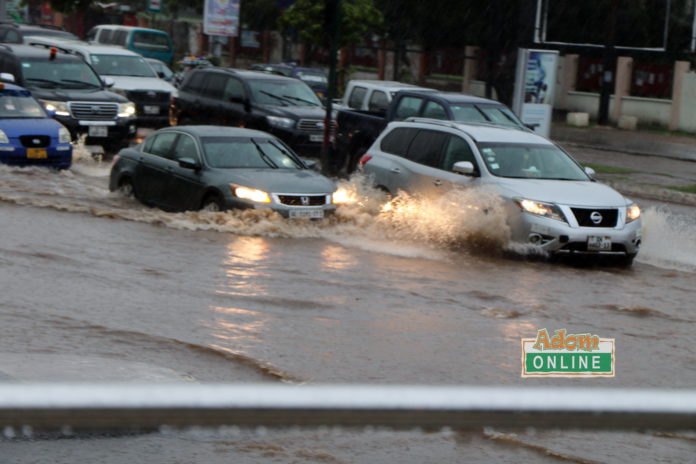The Ghana Meteorological Agency (GMET) has warned that floods in Accra are going to increase this year due to the low resilience of the area to adapt to heavy rains.
It said the 2020 season was going to be mostly similar to or slightly lower in terms of rainfall amount and distribution than last year’s.
However, it said, the vulnerability of residents in Accra had increased as a result of the continuous construction of structures in water areas, inadequate and choked drainage systems, among others.
“Previously, Accra could get flooded only when it experienced over 80 millimetres of rains, but currently even about 30 millimetres of rains could make the city go under water. The situation is due to anthropogenic (human) activities among individuals who live in the area,” the agency said.
Advice
At a press briefing in Accra yesterday, the Deputy Director and Head of Research and Applied Meteorology of the GMET, Mrs Francisca Martey, advocated the need for Ghana to improve on safety mechanisms, particularly within lowland areas in Accra, to ensure individual safety.
She also urged individuals residing in lowland areas in Accra to move to higher grounds or safer places before the rains set in, adding that there should also be an improvement in the capacity of the national health systems and national platforms for disaster risk reduction.
She also called for the establishment and operationalisation of integrated monitoring and early warning systems for flood risk, saying that the exchanges among the agencies in charge of flood monitoring, disaster risk reduction and humanitarian aid should also be escalated.
Projecting when the rainy season would start, Mrs Martey said the rains were expected from the final week of February to the third week in March in the forest zone, with the coastal belt, comprising the west and the east, expecting them from the first week of March through to the second week in April.
For the transition zone, the rains were expected from the fourth week of March through to the second week of April, while the North, Upper East and Upper West zones were projected to experience rain from the second week of April through to the second week of May, she added.
Forecast
Giving a breakdown of the 2020 seasonal forecast for the country, Mr Martey said early onset rains were expected over most places in the forest zone of the country, adding that the rest of the country would experience normal onset, with the exception of the Upper East Region, which would have a late onset.
She said the total cumulative rainfall amount for March/April/May (MAM), both in time and space, would be near-normal-to-above-normal for most places in Ghana.
She added that most parts of the Upper regions would also experience near-normal-to-above-normal rainfall for the MAM season.
She further stated that April/May/June (AMJ) was expected to have near-normal rainfall for most places in the country, adding that the Western Forest Zone, the Upper East Region and most places in the Upper West Region would experience below-normal-to-near-normal rainfall.
At the beginning of the rainy season, Mrs Martey said, an early dry spell of between seven and 10 days was expected for most places in the southern part of the country, adding that the east coast and most parts of the north would, however, experience between 10 and 12 days of dry spell.
She said during the later stages of the rainy season, nine to 12 days of dry spell was expected over most places in the northern part of the country, whereas normal cessation dates were forecast for all the various zones of the country.
Transport safety
The Director General of the agency, Mr Micheal Tanu, warned that there was a high probability that this year’s rains would be accompanied by strong winds and lightning and advised the transport services to adhere to safety precautions.
“This year’s season may lead to some roads becoming impassable, for which reason road users and transport services should be mindful when plying the roads, particularly in Accra, Kumasi and Takoradi. Drivers should also resist and desist from driving through flood water,” he said.
He also advised light aircraft to take utmost care and avoid flying through deep convection clouds that were associated with severe turbulence and lightning, especially in the afternoon.
Source: Daily Graphic

